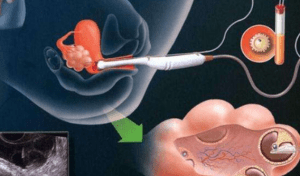What is the overall timeframe for Gilchrist Surrogacy to match a pregnant mother?
Let's give the conclusion first (and what most readers care about most):From the start of the submission process to the completion of the "official match" with the surrogate mother.Commonly found at 1-6 months; in extreme cases.The earliest is a few weeks, the slowest may be 9-12 months... The reason for the large span is that the rate of surrogate mother matching is pulled by four types of variables:organizations and resource pools, your condition requirements, real-time availability of qualified pregnant mothers, and the pace of the legal + medical process.With clearer laws and governmental procedures in place since Kyrgyz 2024, the overall framework of the process is clear, but the details of each agency's implementation and the differences in candidate pools still directly dictate the timing of the search for a surrogate mother and the perceived speed of the surrogacy cycle.
Verifiable legal background (affects the smoothness of the process):
- 2024-01-12 Public Health Protection Act in forceEstablishes the foundational legal framework for assisted reproduction and surrogacy (with provisions for greater openness to foreign nationals/singles widely interpreted and cited).
- 2024-10-14 Cabinet of Ministers Resolution No. 616 Issuing Procedures and Conditions for the Use of Assisted Reproductive TechnologyIt also provides a detailed description of the process and contraindications of ART (including surrogacy) on the medical end.
These two are the compliant bases for surrogacy to Kat in recent years.
Many organizations will advertise"No wait/dispense as you go.", which could indeed hold true locally - provided:The organization's own prescreening pool is sufficient, and you have relatively broad requirements for maternal profiling(slightly wider age range, less demanding birth history, first time surrogates accepted, etc.). If your criteria are more "customized" (e.g., only second child delivered vaginally and all pregnancy tests at a tertiary hospital within 1 month, only certain ethnicities/fluent in English, etc.), the time period will be stretched.
In order to give you a sense of "time on the ground", let's start with a comparison table of scenarios (for planning purposes only, not a mandatory standard, sources and variables are explained below):
| take | Estimated time to match (from submission of full set of information) | Examples of trigger conditions | Remarks/risk points |
|---|---|---|---|
| Adequate Resource Base + Broad Requirements | 2-8 weeks | Accepts 23-38 years old, 1-2 normal births/Cesarean section; accepts first-time surrogates; contracted upon passing medical examination | Need agency to really have pre-screened candidates; still waiting for medical/psychological evaluations to fall into place |
| General Requirements + General Library | 2-4 months | Age, birth history, BMI Basic restrictions apply; one successful surrogacy experience is desired | Common path, where most cases fall |
| Requirements are on the customized side | 4-6 months | English/Russian communication required, limited to previous deliveries or as long as there is a "history of successful surrogacy". | Considerable reliance on breadth of institutional resources |
| Highly customizable/cross-area redeployment | 6-12 months | Also card age, birth history, previous surrogacy history, language and family background, etc. | Susceptible to the "fancy - no medical/contract tug-of-war" cycle |
Notes:The "weeks/months" in the table assumes that you/the organization has all the information, and that the legal and medical exams move forward in tandem; missing pieces of any of these will lengthen the cycle. The "no wait" promotion is more of a commitment of the organization's resources than a legal guarantee, and should be spelled out in the contract and list of services.
One more.The reality of "match success rates": There is no publicly available, government-level database of match success rates in Kyrgyzstan, and the industry typically uses proxy indicators such as "first-round candidate success rate" and "success rate within three months," which are often self-reported by the organizations themselves. There is no public, government-level database of "match success rates" in Kyrgyzstan, and the industry usually uses proxy indicators such as "first-round candidate success rate" and "success rate within three months", which are mostly self-reported by the organizations. The "high success rate" you see is a marketing term; the real determinant of your personal success rate isCandidate pool quality + speed of your decision making + medical/legal tempo, rather than a generalized percentage. The law holds the door open, the micro-differences are in the enforcement.
Typical Match Cycle: Is 1-6 months the norm?
Yes, most families do fall in the 1-6 month range.There are three reasons for this:
- Legal and procedural clarity--The new law for 2024 and the accompanying procedures for 2024 allow hospitals/institutions to know what protocols to follow (scope of medical exams, psychological evaluations, informed consent, notarization of contracts, etc.), and the "step-by-step clarity" itself reduces the need for unnecessary waiting.
- It is common for local organizations to build or share their own maternity banks.--Some organizations claim to be "no wait" and "ready to match", but the bottom line is continuous recruitment + pre-screening; this will take you from "finding people from scratch" to "selecting the best among the candidates". This will shorten the first half of the process from "finding people from scratch" to "choosing the best among the candidates".
- Project can match different embryo sources--You can complete egg retrieval, fertilization and 3-generation screening in Bishkek, or you can ship frozen embryos from overseas to a local IVF center to continue the process, eliminating the need for multiple stops across the border.
However, "1-6 months" is a range, not a guarantee. In a real calendar, a common time slice would look something like this (in the case of a "regular match"):
- Weeks 0-2:Submission of information, initial screening, and determination of profile (age, reproductive history, acceptance of first-time surrogate, etc.).
- Weeks 2-8:The organization comes up with the first batch of candidates (with resumes/previous pregnancy history/initial screening results), and you talk about it (video) → Both parties select each other.
- Weeks 2-12:Physical and psychological evaluation, signing of contract, notarization and filing (the pace varies from organization to organization and often crosses over with the previous step).
- Weeks 8-16:If you need to do endo preparation/correction first, or wait for your side of the embryo to be in place, synchronize the advancement.
As long as the medical examination is not "hard" and the contract is not repeatedly changed.Completion of the "official match" within 3 months is entirely within the realm of possibilityIf there is a change of candidate in the middle of the process (withdrawal/unsuitability of the candidate), the process will go back to the "Candidate-Assessment" step, which will naturally take a longer time.
Why the huge time difference? An in-depth look at the four core factors that affect match speeds
First, let's start with the bottom line: the Public Health Security Act (No. 10), which entered into force on January 12, 2024, and the Rules of Procedure for Assisted Reproductive Technology and Surrogacy, which were issued in conjunction with the Cabinet Resolution No. 616 of October 14, 2024, have incorporated the "who can do it, and how to do it" into the regulations and operating rules. --The following are the rules of procedure for assisted reproductive technology and surrogacy.Unmarried women and unmarried partners are also explicitly included in the scope of ART use.; hospitals and organizations execute accordingly, the process framework is clearer, but the speed of execution still depends on the degree of cooperation between the organization and the individual link.
Factor 1: Efficiency of surrogacy agencies and surrogate mother resource pools
In the end.The organization you choose is the cost of your time.The difference is mainly in three points:
- Surrogate pool size and "pre-screening depth":Some organizations recruit year-round, do the initial screening (history questionnaire, basic physical, psychological evaluation), and even synchronize some of the laboratory and ultrasound evaluations - this "candidate pool with a medical report" means that you can get your resume to video communication, terms and conditions, matching! This "pool with medical reports" means that you can video your resume and talk about terms and conditions, and the matching cycle is compressed to a matter of weeks - two months. A number of agencies operating in Bishkek openly state that "we screen and match, and link with designated fertility centers.
- Standardized legal templates and parallel advancement:Mature surrogacy agencies run contracts, notarizations, power of attorney and medical appointments in parallel (not "this one and then the next"), and you only need to fill out individual documents to sign them.616 Resolution 616 puts the "Surrogacy Procedures and Conditions" in the Appendix, and agencies have the rules to follow. The organization has rules to follow, and whoever makes the forms and nodes more detailed will be less likely to make a detour.
- Cross-agency synergies:Do you have frozen embryos from overseas? We have taken on several families this year with embryo transfers from Moscow to Kirghizia, and we will contact the foreign hospital directly to arrange for embryo transfer/receipt and archiving, reducing round-trip communication losses.
Our approach is straightforward: don't just look at the "quotation", ask about the degree of completion of the medical examination and the list of partner hospitals. These four indicators are more predictive of how quickly your surrogate will be matched than any "success rate slogan".
Factor 2: How "special" are the prospective parents' (your) specific requirements?
The "narrower" the list of conditions, the "longer" the time.
- Portrait limitations (age, labor history, BMI, must have a history of successful surrogacy):The caliber of the selection process has been changed from "15 suitable candidates out of 100" to "2-3 candidates out of 100". If these candidates have to go through medical and psychological evaluations, any one of them who fails will have to go back to the drawing board.
- "Non-medical" requirements such as language/education/communication style:Many families want to be video fluent in English, have to write records, and report back on time - these are reasonable expectations, but if the soft claims are written as hard thresholds (e.g., "fluent in English + higher education + history of successful secondary surrogacy"), the matching time increases exponentially.
- Flexibility determines pace:The law allows unmarried individuals, unmarried partners to enter the ART/surrogacy process, and legality is not an issue; however, the"Acceptable range"(e.g., a slight relaxation of the age bracket, acceptance of first-time surrogates) can have an immediate impact on the cycle. Laws and procedures give eligibility, and the market can determine the pace with the available candidates.
Tip:
Split the requirements into"Bottom line (never back down)," "Prioritize (try to meet)," "Plus points (optional)"Tier 3, tell the agency counselor. You'll clearly feel the frequency of candidate appearances rising.
Factor 3: Screening criteria and current availability of qualified pregnant mothers
Even the strongest resource pool of surrogate moms will have to go through thePhysical examination + Psychological evaluationThese two hurdles; these two hurdles are as much about safety as they are about deciding whether or not you have to start over.
- Medical Screening:Infectious disease testing (HIV/Hepatitis B/Hepatitis C/Syphilis, etc.), hormonal and metabolic assessment, gynecological ultrasound (endometrium, fibroids/polyps), drug and substance testing, etc., are commonly done at fertility centers - these are global ART consensus programs that are mirrored by the local fertility centers. If you get stuck at the "deep screening" stage (e.g., uterine conditions are not met, infectious disease indicators are not met), you will have to re-candidate.
- Psychological assessment:It's not just "just talk about it". Specialized scales + interviews assess motivation, stress, family support and risk perception; again, no one can be enrolled if they don't pass the psychological end of the scale.
- Real-time availability:Candidacy waits for no one. Some people are already doing endothelial preparation in other programs, some people are on hold due to family matters, and some people have just completed an evaluation and need to recuperate. If the organization can clearly label the "time available for enrollment", you will have a lot less ineffective communication. Most organizations in Bishkek write "screening-physical-preparation" as an assembly line, but the gaps at each stop (e.g., test scheduling, rechecks) can eat up 1-3 weeks.
Conclusion: Physical and psychological examinations are a "no-go". What you can do is to let the organization do all the tests at once and not split them into three or four; otherwise, every time there is a small problem, another queue, the time is like a "funnel" slowly drained away.
Factor 4: Time-consuming legal and medical processes that cannot be ignored
The statute draws the red lines and road signs, but it's still a process to actually get it off the ground.
- The legal end:Resolution No. 616 includes the "Procedures and Conditions for Surrogacy", "Complementary ART Rules", "Management of Sperm and Egg Supply and Biological Materials" in the Appendix and declares that the old rules will be repealed and harmonized with the new ones in 2018. harmonized from the new. For you, the good thing is that the path to compliance is clear; however, the contract, notarization, authorization and filing still need to be completed item by item, and the round-trip revision is a black hole of time.
- Medical end:Regulations confirm that ART is available for unmarried women/unmarried partners, and fertility centers take cases accordingly; however, there is still the process of filing, lab work, endothelial preparation, and possible review or correction before transplantation. Scheduling varies from center to center, and appointments are tighter during peak seasons (when there is a concentration of local and multinational patients).
- Variables of cross-border synergies:If it involves a multi-country link (e.g., embryo construction in a third country, transfer in Kyrgyzstan, delivery in a neighboring country), any change in visas, certificates, or flights can disrupt your timeline - this year, there were multi-jurisdictional cross-border surrogacy cases that were named in the judgment as "high complexity and insufficient legal considerations! This year, a multi-jurisdictional cross-border surrogacy case was cited in a judgment for "high complexity and insufficient legal considerations", reminding us to be careful about choosing the "jigsaw" route.
A quick checklist of "time levers"
(Turning four factors into an operable switch)
| key factor | Possible time-consuming points | Something you can do right away. | Projected savings |
|---|---|---|---|
| Institutions and resource base | Insufficient candidates, split medical exams, legal changes back and forth | Choose an organization that has a pre-screened library and can advance in parallel; look at the last 90 days of outflow rates first | 2-8 weeks |
| Portrait of you | Too many cards with "soft sclerosis" conditions | Hierarchize needs: bottom line/priority/plus points, relax non-medical items | 2-6 weeks |
| Medical and psychological screening | Second review, test queue | Do the whole package at once; have the agency confirm the time available for enrollment | 1-4 weeks |
| Legal and Medical Processes | Repeated contracts, notary scheduling, transplant scheduling | Drafted using standardized templates; documents aligned first; multi-jurisdictional splicing avoided to the extent possible | 2-6 weeks |
Again, the point is: the regulations are in place (2024-2025), and it's the agency's implementation and your decision-making that really separates the "matching hours". Keep the controls tight and time will come back to you.
How to effectively reduce waiting times? 5 Practical Tips for Prospective Parents
Advice #1: How to Evaluate and Select a Professional and Efficient Surrogacy Agency?
By choosing a Gilchrist surrogacy agency, you are actually making an investment in your time.What you need is not a "nice looking website", but an infrastructure that speeds up:
- Look at the resource library with pre-screening depth:Is there a pool of ready-to-match candidates? Have the candidates had a basic medical and psychological evaluation? Some facilities in Bishkek openly promise "no wait matching" and allow you to ship embryos from outside hospitals to local partner fertility centers, taking the process directly from "selection" to "evaluation + contract". The process goes directly from "selection" to "evaluation + contract", which is a long way less traveled. But I will tell you that since Kyrgyz surrogacy has been legal, surrogate mother volunteering has become increasingly tight. The fastest we can match a client with a surrogate mom is 1-2 months.
- Look for the ability to "parallelize":Stronger institutions will run contracts, notarization/power of attorney (POA), candidate medical examinations, and hospital scheduling in parallel, rather than "serially taking their time". Kyrgyz Cabinet of Ministers Resolution No. 616, issued on October 14, 2024, clarifies the "Procedures and Conditions of Use of Assisted Reproductive Technology (ART)" and provides the institutional foundation for agencies to standardize parallelism; whoever has their processes down, will be faster.
- A look at cross-agency synergies and embryo transfer experiences:If you have frozen embryos from overseas, is your organization skilled in interfacing with foreign hospitals and arranging for embryo acceptance and archiving? Compliance with "handheld cryotransfer/third-party cold chain" is a time-critical point for cross-country projects (appointments and customs clearance have to be scheduled).
Recommendation 2: Define your core needs and rationalize your list of requirements
The "narrower" the list of conditions, the "slower" the matching.--It's not a matter of position, it's supply and demand math. The approach is simple:
- Divide the claims into three layers:Bottom line (required) / Prioritize (as much as possible) / Bonus points (optional)For example: age, birth history, BMI, smoking and drinking history are put on the "bottom line"; language fluency and reporting frequency are put on the "priority"; education background and interests are put on the "priority". For example: age, birth history, BMI, smoking and drinking history are put on the "bottom line"; language fluency and reporting frequency are put on the "priority"; educational background, hobbies and interests are put on the "plus points". The educational background, hobbies and interests are given "extra points".
- Utilizing the "room to maneuver" afforded by local regulations--The Public Health Law of 2024 + Resolution 616 sets a clear framework (definitions, contraindications, procedures) for ART/surrogacy, with less ambiguity; don't "harden the bar" for soft claims within the legal boundaries, and you'll notice that candidacies appear more quickly. You will obviously feel that candidates will appear more quickly.
- The market side reality has to be looked at as well:Many local organizations openly mention that they can provide solutions for single/transnational clients and also support "bring your own embryo into the group", but whether or not and how to take the case is subject to the medical + legal landing - don't just look at the marketing language, but also look at the contract and the hospital process.
Recommendation 3: Prepare all necessary documents in advance
Whether the documents are all together or not determines whether the process can be parallelized.By having all the information at once, you are saving yourself months of operation.
- Personal and Marriage Category:Passport, (if applicable) marriage/divorce license, translation and notarization (double copies recommended for easy use by both the institution and the notary). Some institutions will ask you to produce a local notarized POA at the time of signing for the agent to run errands; don't wait until the day of signing.
- Medical:Previous fertility/miscarriage history, AMH/hormone profiles, semen analysis, infectious disease test reports, etc.-the newer the better for quick decision making by the doctor.
- Embryo transfer class (if any):A list of embryos from the original storage facility, a description of the cryopreservation media, a letter of acceptance from the recipient clinic, a cold chain/transfer program and itinerary documents. A reliable cold chain service will specify the date of pick-up, port of entry and temperature control records to minimize the embarrassment of "arriving but not being able to be stored".
- Pre-awareness of birth/return materials:different countriesRequirements for birth registration, translation, notarization/certification (apostille or consulate certification) are different. Some service providers put "birth certificate + translation + certification + embassy documents".Packaging into the project also clarifies the staging nodes - you'd better check the templates in advance, don't wait for the baby to be born to make up for it.
Experience Post:
Put all the files on a shared cloud drive (in folders under "legal/medical/transport/contracts") and authorize it to the agency's legal department and the hospital's nurse's station. Whoever needs it, gets it down themselves; you don't have to use it for backhaul, and matching efficiency goes up naturally.
Recommendation 4: Maintain active communication and quick decision-making to not miss out on the best candidates
Candidates are "live". What you need to do is to target the right person the first time they come along:
- Make an appointment to meet:Make an appointment with the organization to give feedback (e.g., a "see/not see" decision within 48 hours of the arrival of the candidate's resume), and set a time window for the video interview to avoid rescheduling back and forth.
- Pre-identification of the "bottom line" of decision-making:You and your consultant should clarify which medical indicators are "red lines" and which are "acceptable for review", so as to avoid "repeated hesitations" and delaying the window period.
- Allow organizations to "broadcast what's going on":Organizations, like some, stay updated at all stages of candidate screening-checking-preparation; you bring up the pace of feedback, and the whole matching chain follows.
Recommendation 5: Parallel advancement and "Plan B" - moving more steadily and quickly on two legs
Don't pin your hopes on the "only candidate" and the "only schedule" - learn to plan B:
- Candidate Parallel Evaluation:Allow organizations to synchronize the initial screening/psychological evaluation of 2-3 candidates, and whoever passes the full amount first will be given priority to sign; the remaining candidates will be retained for a short period of time, so as to prevent "the first choice is stuck due to the medical examination" and make you go back to all of them.
- Alternate bits of medical scheduling:Primary hospitals will be "full" at peak times, reserve a transplant/lining prep slot at a second partner hospital, and switch seamlessly if necessary. 616 puts the ART process into the Uniform Rules, and inter-hospital switching can be institutionally underwritten, but it's all about whether or not you have an alternate schedule.
- Embryo transfer locks gears early:Reliable portable cold chain needs to be booked in advance (especially cross-border and holidays), lock the date early, get the letter of acceptance early, to avoid "the candidate is ready, but the embryo is still on the way".
"How much time can be saved?" -Practical Comparison Table
| Accelerated movements | What you're going to do. | Common chokepoints | Projected savings |
|---|---|---|---|
| Choose the right organization | To prescreen libraries + parallel advancement + embryo docking data | Just look at the quote, don't ask for the data | 2-8 weeks (process compression) |
| portrait in simplified form | Demand for three tiers of grading and relaxation of non-medical hard cards | Language/education "soft to hard" | 2-6 weeks (candidates appear sooner) |
| Documents are available at one time | Passport/Marriage/Medical/POA/Transit/Template | Notarization of temporary replacements and repeated translations | 2-6 weeks (realization of parallelism) |
| Rapid decision-making | 48 hours feedback + predefined red lines | Hesitating back and forth, missing windows | 1-3 weeks (less queuing) |
| Parallel + Alternative | Parallel assessment of 2-3 candidates + second home scheduling | Single point of failure all over again | 2-4 weeks (with reduced return) |
A gentle but firm reminder:Regulations and procedures will be clearer after 2024, which gives us a "fast track"; the real length of time is mostly won or lost in execution. Get these five things right, and it will be very obvious: candidates will appear more frequently, contracts will be smoother, and scheduling will be more stable.
The most important question for users: what happens if the match fails or there is a problem in the middle of the process?
Give the bottom line first:Kyrgyz Cabinet of Ministers Resolution No. 616, adopted on 2024-10-14, included "Procedures and conditions for surrogacy, rules for ART use, gamete donation and management of biological materials" in the Appendix (which came into force and repealed the old regulation of 2018). The Public Health Protection Act of the same year (2024-01-12, No. 14, still in the effective text on 2025-01-21) puts the"Surrogacy Agreements" "Assisted Reproductive Technology"Write in the definition of the law. That is to say:The process is governed by the law, and when individual parts of the process get stuck (switching, rewiring, redoing grafts), there are rules and regulations to follow.
How long does it take to re-match? Will the cost increase?
Don't panic yet.Re-matching is generally not "starting from scratch.", you've already gone through the portrait combing, document notarization, and some of the forensics are in - it's mostly the candidacy and evaluation part that you really have to start over.
What's the time estimate?Look at the "stuck at what step" -
- Dropped out "before the law was signed".(failing to match, failing a medical examination, failing a psychological assessment): established institutions will fast-track the replacement from the pre-screening pool.2-8 weeks is more commonSome organizations openly emphasize "no wait matching", and the bottom line is year-round recruiting + pre-screening (which is when you get the distinct feeling that "candidates are coming in fast").
- Withdrawal "after legal contracting, before transplantation":Need for retroactive/change of contract + medical examination for new candidates.4-10 weeks is more realistic--Legal and medical must go hand in hand or they will drag on. 616 allows the process to be made "checklisted and node-based" in parallel, and it is up to the agency to implement it.
- Irresistible continuation during "post-transplantation/pregnancy":Subject to alternative mechanisms and insurance/cost provisions in the contract; actual time varies widely depending on medical evaluation and your Plan B (with or without alternate candidates and alternate scheduling).
Will the money increase? What will increase?Not loaded:Likely to increaseBut in which subjects and how much? However, contractual and institutional policies can be used to "draw boundaries" in advance as to where and how much the increase will occur. Refer to the table below (based on the scope of common contracts and publicly available clauses of multinational organizations):
| sight | Extra time (common) | Possible new cost accounts | Remarks/basis |
|---|---|---|---|
| Candidates withdraw before the law | 2-8 weeks | 0 - small "re-matching service fee" (many organizations reduce or waive this fee at this stage); partial medical/psychological assessment for new candidates | Most attorneys recommend no or minimal reallocation fees at this stage; pay attention to the contractual "Rematch Fee" conditions listed. |
| Withdrawal after contracting, before transplantation | 4-10 weeks | Attorney's fees (change/re-signing), retesting/new test for pregnant mothers, translation and notarization errand fees, possible candidacy allowance | A 4-week cycle is common for contract negotiations, and longer for complex clauses. |
| Failed transplants need to be retransplanted | 4-8 weeks | One FET medical fee (medication, endothelial preparation, operating room), lab review, and consultation fee for adjusting protocols if necessary | The literature suggests that "immediate/subperiodic FET" is equivalent or superior to "delayed FET" and that it is not necessary to "put off trying again for a long time". |
| Withdrawal or material change triggers "substitution" | 8-12 weeks + | Contractual: Alternative candidate initiation fee, reimbursement of expenses incurred, insurance difference | Contracts need to agree on "who pays and to what extent"; both ASRM and AAAA emphasize independent counsel and pre-contextual clauses. |
What is the process and timeline after a failed transplant?
Break down "transplant failure" into three things:Confirm results - review program - schedule next time. The whole process can be fast and steady.
- Confirmation and Recovery:It is common to do β-hCG judgment on the 10th-14th day after transplantation; after negative, according to the doctor's advice, stop the medication, wait for withdrawal bleeding, and return to assessable status within 1 cycle. (Different centers may vary slightly, but the general direction is the same.)
- Should we "wait and try again"?In the past, many people would "take a few months off", but the available evidence does not support the need to wait: systematic reviews and randomized studies suggest that...Immediate/sub-cycle FET is not inferior or even slightly superior to delayed FET in terms of clinical pregnancy rate and live birth rate; In most cases, you will be able to schedule another next cycle. Your doctor will assess this in the context of whether you have a natural/artificial cycle, whether you have a recent infection or bleeding, etc.
- Should we "change the way we play"?One failure does not mean "you can't do it", but it is well worth making targeted adjustments: changing the timing of endothelial preparation and luteal support; fine-tuning the transfer window; reducing the number of embryos transferred at one time; and sticking to a single blastocyst strategy. These adjustments can be accomplished within the 4-8 week retransfer window.
Bottom line: Don't equate failure with "hitting the pause button". In most cases, you'll be ready to go again the next cycle; it's more effective to review the program than to "put it off for a couple of months for psychological comfort".
How do you contractually hedge against the risk of pregnant mothers dropping out?
The right to withdraw always exists - it's both a legal and ethical bottom line and a respect for the subjectivity of the expectant mother (ASRM is clear: the expectant mother has the sole right to consent to her own medical decisions). What we can do is to put in the contract that"If it happens, what to do about it."Write clearly: who is responsible, how to count, how to succeed.
Put at least these 9 in the contract (or service agreement):
- Independent legal counsel:The expectant mother and the client each have independent lawyers, with fees and communication timeframes spelled out (usually a 4-week window is set aside for contract review).
- Reallocation mechanisms and cost boundaries:Clarify the circumstances under which the reallocation fee will be waived/reduced and the circumstances under which a fixed or stepped amount will be charged. Write a checklist of the burden of proof and the process.
- Payment Nodes and Hosting:Agree on milestone payments (filing/signing/over legal/transplant/in pregnancy/delivery), use a third-party escrow account, and exit with automatic billing by milestone to avoid pulling.
- Medical Decision Making and Disagreement Management:Involving fetal reduction/cesarean section/emergency disposal, etc., the inform-decide-document process needs to be confirmed in advance; the pregnant mother's right to make decisions about her own medical care is also recognized and supported by a record of risk communication.
- Health Behavior and Follow-Up Obligations:Smoking and drinking, medication contraindications, frequency of maternity checks, reporting timeframes and review methods (video/written) should be both enforceable and respected.
- Insurance and medical expenses:Specify medical/commercial insurance coverage and agree on a list of exemptions and the handling of third-party damage (e.g., traffic accidents).
- Change and Termination Clause:classifier for objects with a handle"Change in law", "force majeure", "health emergencies", etc. written as triggers and accompanied by alternative candidatesInitiate SOPs with timelines.
- Confidentiality and use of information:The scope of use and retention period of images, medical records, and test results to avoid the risk of secondary transmission.
- List of documents with timelines:Make the notarization/translation/POA/institutional consent/embryo acceptance letter a "checklist+deadline" with the procedural nodes established by Resolution 616, in parallel if you can, don't slow down the pace with serialization.
Frequently Asked Questions (FAQ)
Q1: How long does the whole Kyrgyz surrogacy process take in total, from the beginning of the consultation to holding the baby?
Counting with "conservative and realistic" calibers:
- Front to finish formal match:in general 1-6 months(Agency resource pools, your conditions, and medical/legal rhythms all affect this), a segment we've broken down in detail in previous groups.
- Pregnancy to delivery:Caught in the normal course of pregnancy 38-40 weeksThe
- Birth certificate, notarization/certification (Apostille), embassy formalities and return documents:2-8 weeksMore common - depends on the consulate process in your country of origin, whether a DNA paternity test is required, and whether the translation/certification link is in place at once. Kyrgyzstan is a party to the Hague Convention on Authentication, and the local practice of issuing Apostille is clear, so just bring the documents back to your country for authentication (embassies may check otherwise).
Little reminder:
We provide all customers with "birth registration - document translation - Apostille - embassy materials" one-stop assistance services, process description will be written "in the household registration authorities to obtain Birth certificate → translation → certification → sent to the embassy", this paragraph determines your final "can not bring the baby home early" rhythm.
One sentence estimate:From "first counseling" to "returning home with a baby," most families will fall in the 14-20 months of the range (match 1-6 months + 9-10 months gestation + 0.5-2 months documentation). If the organization has a pre-screening library, a mature legal template, and your side of the document is ready at once, the practicalities can be significantly downward.
Q2: Is there a correlation between the total cost of Kyrgyz surrogacy and the match waiting time?
There is a correlation, but it is not "necessarily more expensive when it is longer". More accurately, it is"Correlation of variables after stacking"::
- Wait times lengthen, with common increments coming from: second medical/psychological evaluations, multiple rounds of revisions by attorneys, round trips for translation and notarization, scheduling changes; and in the event of a re-match or re-transplantation, there will be a lump sum each for medical and legal. Many organizations split the cost into installments (contract/transplant/mid-pregnancy/delivery billing), with transparent terms and conditions, and the increments are listed separately.
- But if you layer the requirements and allow agencies to move forward in parallel (contracts synchronized with medical exams, candidates evaluated in parallel), the total bill may not be more expensive, even if the match takes a little longer - the key is whether or not you go back repeatedly vs. whether or not it triggers a rewire/re-implant.
Here's a table to help you see straight where the money might add up over time:
| impact factor | Possible extension of time | Common additions | How do you control it? |
|---|---|---|---|
| Candidates for replacement (pre-law) | 2-8 weeks | New candidate medical/psychological assessment, micro-reassignment service fee (reduced for many organizations) | Allow the organization to screen 2-3 people in parallel and do the entire set of tests at once. |
| Multiple rounds of contract amendments | 2-6 weeks | Attorney's overtime, translation and notarization round trip | Open with a standardized template, aligning the redline terms before touching them up. |
| Re-transplantation (FET) | 4-8 weeks | Drugs + surgery + labs for one FET | Doctor's orders go on the next cycle, don't wait unnecessarily long. |
Q3: During the matching process, can I video or meet with the pregnant mother candidate?
Yes, but with "institutional brokering + legal boundaries".
- The public processes of local organizations are commonly included:Propose a suitable candidate → video interview → mutual consent → medical/psychological evaluation → signing/notarizationThe interviews are usually coordinated by the agency in terms of time and language support. Interviews are usually coordinated by the agency in terms of time and language support to ensure privacy compliance and information reciprocity.
- After entering the contracting process, the communication rhythm will be implemented according to the contract (reporting frequency, communication channels, medical accompaniment, etc.); like the service introduction of some reproductive centers, the "organization and law, notary arrangement, parents and surrogate mother agreement" will be written into the process, you can clearly feel that it is a three-party communication system of "medical+legal+institutional". You can clearly feel that it is a tripartite communication system of "medical + legal + organization".
Hands-on advice:
Don't make the first video too long, 20-30 minutes is enough; it's more efficient and protective to ask "bottom line questions" (health/rhythm/previous pregnancy history/opinions on labor and delivery) and let the agency verify the rest of the details during the physical and psychological evaluation.
Q4: Does Kyrgyz Surrogacy take longer to match single people or the LGBT community?
More openness at the legal level and market level looking at supply and enforcement.
- Legal Base:The Law on Citizen's Health Protection of 2024 and Cabinet Resolution No. 616 of 2024-10-14 clarify the national rules on ART and surrogacy procedures; within the framework of the law."No restriction of reproductive rights on the basis of marital status"It is a central point that has been interpreted and paraphrased by several.
- Implementation variances:The acceptance policies vary from agency to agency - some say "single and multinational clients" on their website, while others emphasize that their current programs are for "single women and heterosexual couples". "The reality is that the program is available. What this means in reality is that the size of the pool of available matches varies, resulting in different matching times. So you see that for the same singles/rainbow families, agency A says "ready to match", while agency B takes longer to screen and legally validate.
Conclusion:Singles and LGBT families are not "naturally slower"; the key is in the operation of the right organization. Asking questions about policies and writing down the terms of the contract will save you more time than scrolling through slogans on the Internet.















